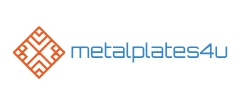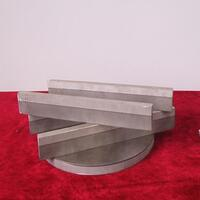1. Introduction
When you hear ‘metal clad,’ your mind might jump to sleek modern homes with rust-hued corten steel siding or commercial buildings wrapped in shimmering zinc facades. But metal clad isn’t just about aesthetics—it’s a versatile engineering solution used across construction, manufacturing, and even electrical systems. From metal clad roofs that withstand decades of weather to clad steel plates engineered for extreme corrosion resistance, this technology blends form and function in powerful ways.

In this deep-dive analysis, we’ll unpack what ‘metal clad’ really means, compare popular types like corten steel facade versus zinc clad roof, and explore how materials like aluminum clad stainless steel or titanium clad serve niche but critical roles. Whether you’re designing a metal clad house or specifying clad metals for industrial use, understanding these nuances matters.
2. What Does Metal Clad Mean?
The term ‘clad metal meaning’ refers to a composite material made by bonding two or more different metals together—typically through roll bonding, explosion bonding, or electroplating. The resulting product retains the structural strength of a base metal (like carbon steel) while gaining the surface properties of a more corrosion-resistant or decorative layer (like stainless steel, copper, or zinc).
This hybrid approach delivers cost efficiency without sacrificing performance. For example, stainless clad aluminum combines the light weight of aluminum with the durability of stainless steel—ideal for aerospace or marine applications. Similarly, aluminum clad steel wire offers enhanced conductivity and oxidation resistance over bare steel conductors.
2.1. Common Metal Clad Types in Construction
In architecture and building design, ‘metal clad‘ most often describes exterior cladding systems. These include:
- Metal clad wall panels (e.g., corrugated steel facade, standing seam siding)
- Metal clad roof systems (e.g., colorbond standing seam, pac clad hwp, zinc clad roof)
- Specialty finishes like corten steel siding or copper siding for high-end aesthetics
These systems protect structures from weather while offering design flexibility. A steel clad building might use vertical standing seam metal siding for clean lines, while a metal clad shed could feature exterior corrugated metal siding for affordability and quick installation.

3. Comparing Popular Metal Cladding Materials
Not all metal cladding is created equal. Each material brings unique advantages—and trade-offs—in cost, maintenance, and longevity.
3.1. Corten Steel Facade vs. Zinc Metal Siding
Corten steel siding develops a stable rust-like patina that eliminates the need for painting—a favorite for industrial-chic metal clad houses. However, corten siding cost can be high, and runoff may stain adjacent surfaces during weathering.
Zinc metal siding, by contrast, forms a protective carbonate layer over time and offers a cooler, bluish-gray tone. A zinc clad dormer or zinc facade ages gracefully with minimal upkeep. Though initially pricier than standard steel, zinc’s 80–100-year lifespan often justifies the investment.
3.2. Aluminum and Copper Options
Aluminum clad sheet (or aluminium clad sheet) is lightweight, non-corrosive, and ideal for coastal environments. Used in pac clad column covers or pac clad coping, it resists salt air better than untreated steel.
Copper siding delivers unmatched elegance and antimicrobial properties but comes at a premium. Over decades, it shifts from bright orange to deep green—making it a statement choice for heritage or luxury projects.

4. Beyond Architecture: Industrial and Electrical Uses of Clad Metals
While facades grab attention, clad metals play vital roles behind the scenes. Clad steel plates—like boiler plate steel bonded with stainless steel—are common in chemical processing tanks where corrosion resistance is critical.
In electrical systems, metal clad wire (including cu clad wire or aluminum clad wire) enhances conductivity and durability. Metal clad electrical wire is frequently used in commercial buildings, especially where mechanical protection is needed—though local codes (like in Pennsylvania) dictate specific installation rules.
4.1. Clad Plates and Specialty Alloys
The world of metal plate extends far beyond basic steel. Engineers select from a vast catalog based on application needs:
- Stainless steel plate grades (316, 304L, 904L) for food or pharmaceutical use
- Alloy plates like 7075 aluminum plate or inconel 718 plate for high-stress aerospace components
- Diamond plate steel or aluminum tread plate for slip-resistant flooring
Clad variants—such as 2024 T3 clad aluminum or copper nickel clad sheets—combine strength with surface performance, enabling lighter, longer-lasting designs.
5. Installation and Practical Considerations
Choosing the right metal clad type involves more than material preference. Factors like climate, budget, and maintenance expectations matter. For instance, a metal clad roof in a humid region might favor aluminum or zinc over untreated steel to avoid premature corrosion.
Installation methods also vary. Standing seam systems (like pac clad standing seam roof) offer concealed fasteners for clean looks and superior water resistance, while corrugated profiles are simpler to install but may require more sealing at overlaps.
For DIYers or contractors, understanding terms like ‘aluminum clad pipe insulation’ or ‘metal clad insulation’ ensures proper thermal and acoustic performance in walls or ducts.
6. Conclusion
Metal clad is far more than a trendy architectural finish—it’s a smart engineering strategy that merges economy with endurance. Whether you’re selecting corten steel siding for its raw beauty, specifying clad steel for a chemical plant, or running metal clad electrical wire through a commercial wall, knowing the differences between clad metal types empowers better decisions. As sustainable design grows, expect clad metals—especially recyclable options like aluminum and zinc—to play an even bigger role in the future of construction.
Our Website founded on October 17, 2012, is a high-tech enterprise committed to the research and development, production, processing, sales and technical services of ceramic relative materials such as Metal. Our products includes but not limited to Boron Carbide Ceramic Products, Boron Nitride Ceramic Products, Silicon Carbide Ceramic Products, Silicon Nitride Ceramic Products, Zirconium Dioxide Ceramic Products, etc. If you are interested, please feel free to contact us.
